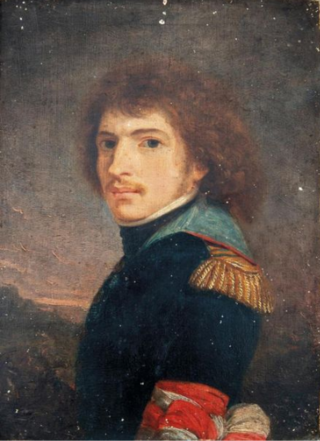
Jean-Andoche Junot, Duke of Abrantes was a French military officer who served in the French Revolutionary Wars and the Napoleonic Wars. He is best known for leading the French invasion of Portugal in 1807.

André Masséna, Prince of Essling, Duke of Rivoli, was a French military commander during the French Revolutionary Wars and the Napoleonic Wars. He was one of the original 18 Marshals of the Empire created by Napoleon I. He was nicknamed l'Enfant chéri de la Victoire. He is considered to be one of the greatest generals of the Revolutionary and Napoleonic Wars.

Marshal General Jean-de-Dieu Soult, 1st Duke of Dalmatia was a French general and statesman. He was a Marshal of the Empire during the Napoleonic Wars, and served three times as President of the Council of Ministers of France.

Duke of Wellington is a title in the Peerage of the United Kingdom. The name derived from Wellington in Somerset. The title was created in 1814 for Arthur Wellesley, 1st Marquess of Wellington, the Anglo-Irish military commander who is best known for leading the decisive victory with Field Marshal von Blücher over Napoleon's forces at Waterloo in Brabant. Wellesley later served twice as British prime minister.

Earl of Coventry is a title that has been created twice in the Peerage of England. The first creation for the Villiers family was created in 1623 and took its name from the city of Coventry. It became extinct in 1687. A decade later, the second creation was for the Coventry family and is still extant.
Earl of Clancarty is a title that has been created twice in the Peerage of Ireland.

Earl of Mornington is a title in the Peerage of Ireland. It was created in 1760 for the Anglo-Irish politician and composer Garret Wellesley, 2nd Baron Mornington. On the death of the fifth earl in 1863, it passed to the Duke of Wellington; since that date, the title has generally been used by courtesy for the heir apparent to the heir apparent to the dukedom.

Henry Hardinge, 1st Viscount Hardinge, was a British Army officer and politician. After serving in the Peninsular War and the Waterloo Campaign he became Secretary at War in Wellington's ministry. After a tour as Chief Secretary for Ireland in 1830 he became Secretary at War again in Sir Robert Peel's cabinet. He went on to be Governor-General of India at the time of the First Anglo-Sikh War and then Commander-in-Chief of the Forces during the Crimean War.
The titles of Earl of Kendal and Duke of Kendal have been created several times, generally for people with a connection to the English/British royal family. The title refers to Kendal, a town in Cumbria.
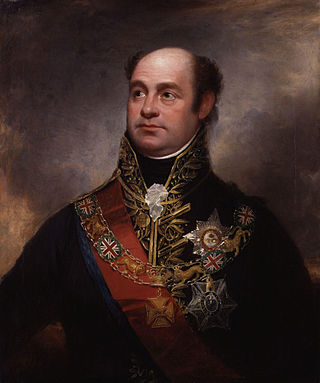
General William Carr Beresford, 1st Viscount Beresford, 1st Marquis of Campo Maior, was an Anglo-Irish soldier and politician. A general in the British Army and a Marshal in the Portuguese Army, he fought alongside the Duke of Wellington in the Peninsular War and held the office of Master-General of the Ordnance in 1828 in the First Wellington ministry. He led the 1806 failed British invasion of Buenos Aires.
Baron Beresford is a title that was created three times for the Beresford family, one in the Peerage of Ireland and later also two in the Peerage of the United Kingdom. In all instances it was created for men who were eminent politicians or soldiers. The first creation still exists as a subsidiary title, but the latter two became extinct at the death of their original holder.

Claude-Victor Perrin, Duke of Belluno was a French military commander who served during the French Revolutionary Wars and the Napoleonic Wars. He was made a Marshal of the Empire in 1807 by Emperor Napoleon I.
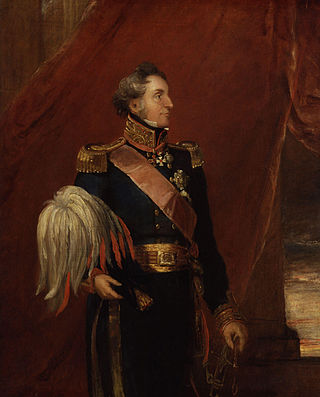
Lieutenant General Richard Hussey Vivian, 1st Baron Vivian, known as Sir Hussey Vivian from 1815 to 1828 and Sir Hussey Vivian, Bt, from 1828 to 1841, was a British cavalry leader from the Vivian family.
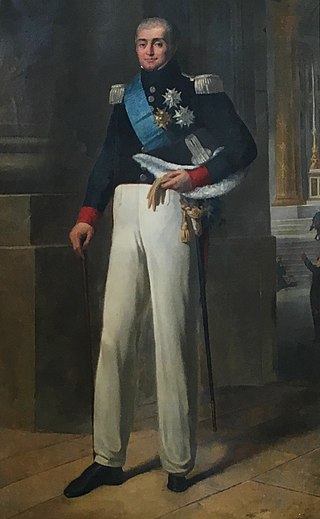
Marie-Victor-Nicolas de Faÿ, Marquis de La Tour-Maubourg was a French cavalry commander under France's Ancien Régime before rising to prominence during the First French Empire.

The Royal House of Dinefwr was a cadet branch of the Royal House of Gwynedd, founded by King Cadell ap Rhodri, son of Rhodri the Great. Their ancestor, Cunedda Wledig, born in late Roman Britain, was a Sub-Roman warlord who founded the Kingdom of Gwynedd during the 5th century, following the Anglo-Saxon settlement of Britain. As Celtic Britons, the House of Dinefwr was ruling before the Norman conquest, having to fight with their neighbors such as the Celtics, Anglo-Saxons and Vikings, before struggling with the Normans afterwards. Many members of this family were influential in Welsh history, such as Hywel Dda, who codified Welsh law under his rule, and achieved the important title of King of the Britons, or Lord Rhys, Prince of Wales, who rebelled against Richard the Lionheart, and became one of the most powerful Welsh leaders of the Middle Ages.
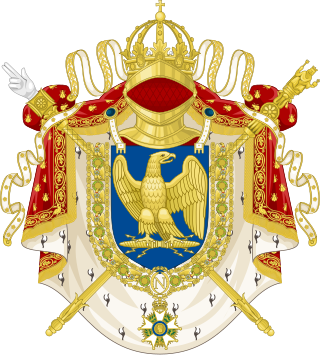
As Emperor of the French, Napoleon I created titles in a newly established noblesse impériale to institute a stable elite in the First French Empire, after the instability resulting from the French Revolution.

The titles of Prince de la Moskowa and Duc d'Elchingen were created by Napoleon, Emperor of the French, for the Marshal of the Empire Michel Ney. Both were victory titles; Ney was created Duc d'Elchingen in 1808, after the Battle of Elchingen, and Prince de la Moskowa in 1813, after the Battle of Borodino.

Arthur Wellesley, 1st Duke of Wellington,, was one of the leading British military and political figures of the 19th century. Often referred to solely as "The Duke of Wellington", he led a successful military career in the Indian subcontinent during the Fourth Anglo-Mysore War (1798–99) and the Second Anglo-Maratha War (1803–1805), and in Europe during the Napoleonic Wars (1803–1815).

Canadian peers and baronets exist in both the peerage of France recognized by the Monarch of Canada and the peerage of the United Kingdom.
















